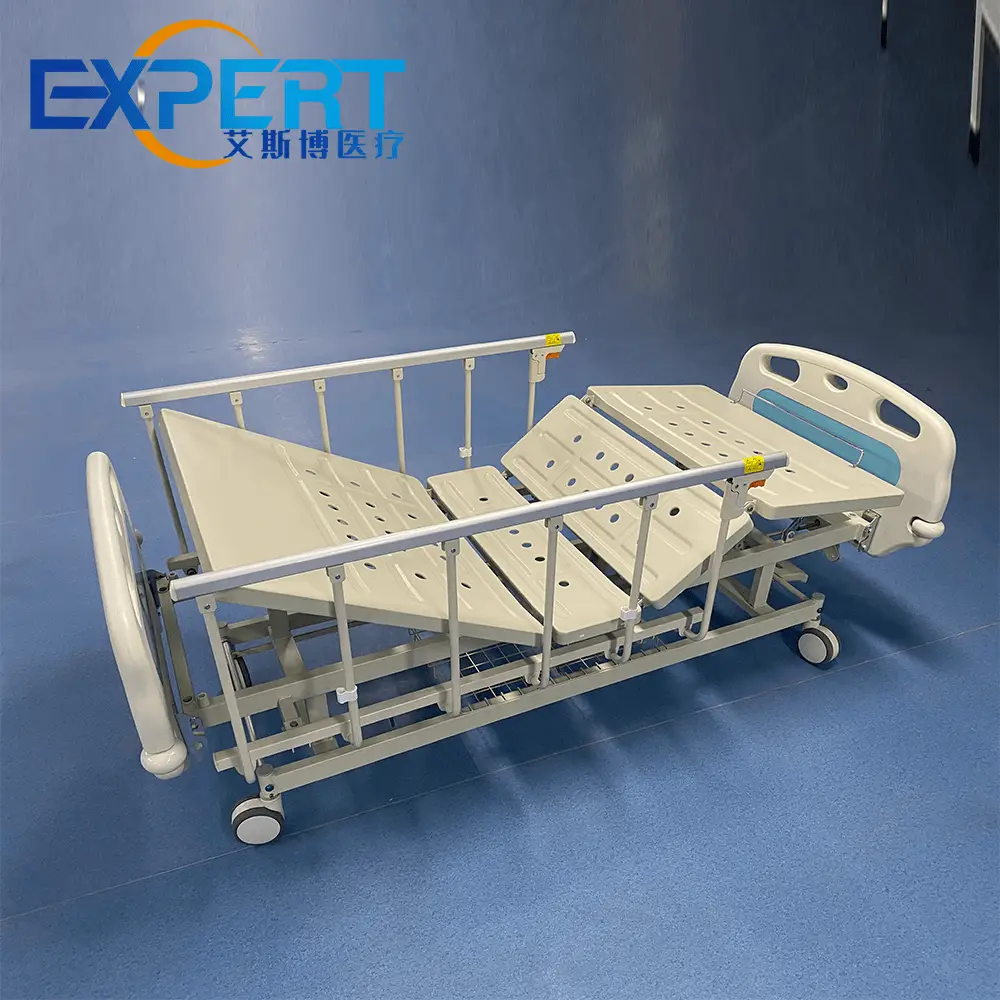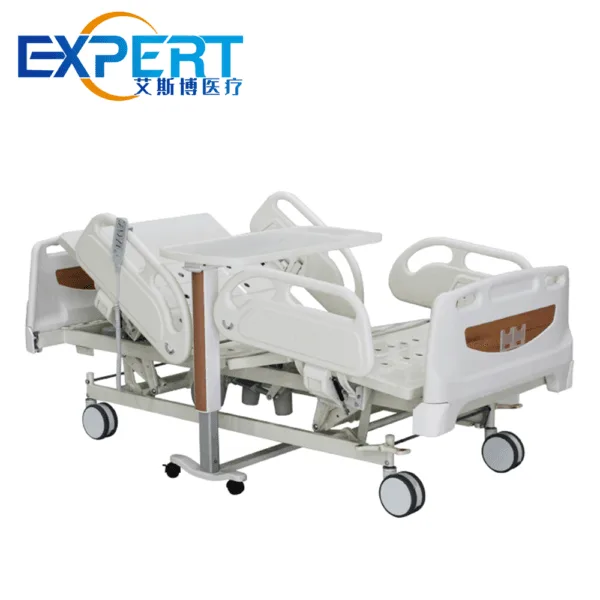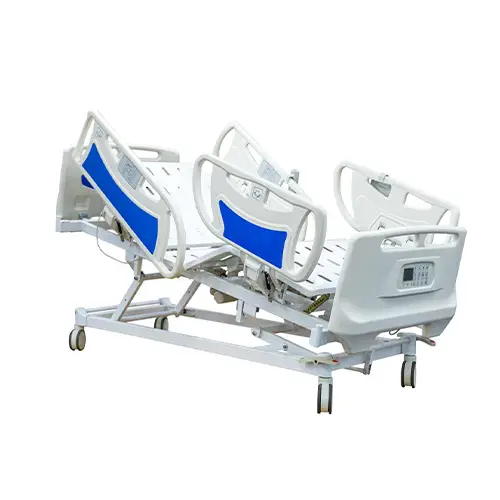Die Anschrift
304 Nordkardinal St.
Dorchester Center, MA 02124
Arbeitsstunden
Montag bis Freitag: 7:00 - 19:00
Wochenende: 10:00 - 17:00
Die Anschrift
304 Nordkardinal St.
Dorchester Center, MA 02124
Arbeitsstunden
Montag bis Freitag: 7:00 - 19:00
Wochenende: 10:00 - 17:00

Bei der häuslichen Pflege ist die Wahl der richtigen Länge eines Krankenhausbetts sowohl für den Komfort des Patienten als auch für die Erleichterung für den Pfleger von entscheidender Bedeutung.
Willkommen auf meinem Blog!
Bevor wir uns in die Inhalte vertiefen, würde ich mich freuen, wenn Sie mir auf meinen Social-Media-Plattformen folgen, wo ich weitere Einblicke gebe, mit der Community interagiere und Updates poste. So können Sie mit mir in Kontakt treten:
Facebook:https://www.facebook.com/profile.php?id=100071234835011
LinkedIn:https://www.linkedin.com/company/74943205/admin/dashboard/
YouTube:www.youtube.com/@shandongexpertmedicalequip4695
TikTok:www.tiktok.com/@expertmedical
Lassen Sie uns nun gemeinsam unsere Reise beginnen. Ich hoffe, Sie finden die Inhalte hier aufschlussreich, spannend und wertvoll.

When it comes to home care, choosing the right length of a hospital bed is crucial for both the patient’s comfort and the caregiver’s ease. Whether the patient is recovering from surgery, managing a long-term illness, or needs extra assistance, the bed must accommodate their physical needs without creating unnecessary challenges.
This blog will guide you through the various aspects of selecting the appropriate length of a hospital bed, the factors influencing your choice, and how this decision impacts the patient’s overall well-being. By understanding the importance of choosing the right length of a hospital bed, you can make an informed decision that provides both comfort and practicality for home care.
The standard length of a hospital bed is typically around 80 inches, or 6.67 feet. This length accommodates most adults comfortably, providing enough space for movement while ensuring support from head to toe. However, depending on the patient’s height and mobility needs, you may need a different bed length.
Some hospital beds come with extended lengths, often reaching up to 84 inches or more. These extended beds are suitable for taller patients who need extra room to stretch out without feeling cramped. On the other hand, there are also shorter bed options, typically around 75 inches, for patients with smaller frames or those who prefer a more compact space. Understanding the variety of lengths available allows you to choose the best fit for the patient’s needs.
| Hospital Bed Length | Suitable For | Average Height Support |
|---|---|---|
| 75 inches | Smaller or shorter patients | Up to 5 feet 8 inches |
| 80 Zoll | Standard length for most adults | Up to 6 feet tall |
| 84 inches | Taller individuals requiring more space | Over 6 feet tall |
Choosing the right length of a hospital bed ensures that the patient is fully supported and can rest comfortably. Beds that are too short or too long may cause discomfort or difficulty in mobility, which can lead to additional health complications. In a home care environment, where space and comfort are priorities, the length of the bed plays a vital role in promoting a restful, safe, and healing environment.









The most important factor when determining the appropriate length of a hospital bed is the patient’s height. Taller individuals will need more space to rest comfortably, which can be achieved by opting for extended-length beds. Similarly, patients with mobility issues may need extra room to move, sit up, or adjust their position without feeling restricted by the bed’s frame.
For patients who require assistance moving or transferring from the bed, a longer hospital bed provides more flexibility. Additionally, it can prevent the patient’s feet from hanging over the edge, which can lead to circulation issues or discomfort.
The room’s dimensions also play a significant role in selecting the length of a hospital bed for home care. A longer bed requires more floor space, which may limit movement around the room for both the patient and caregivers. If the space is limited, a standard-length or shorter hospital bed may be a more practical choice, ensuring that there is enough room for medical equipment, caregivers, and ease of movement.
Before purchasing a hospital bed, measure the available space to ensure the chosen length will fit comfortably without overcrowding the room.
Hospital beds come with different types of adjustability features, including head and foot elevation, as well as the ability to extend or shorten the bed’s length. For patients who require regular adjustments to their position, choosing a bed with adjustable length can offer more flexibility.
Some beds allow users to modify the bed’s length to suit different situations, providing versatility for changing needs. In such cases, caregivers can extend the bed when needed or shorten it to save space when it’s not required.
In addition to height and space considerations, it’s essential to consider the patient’s overall medical needs and comfort. If a patient has conditions like swelling in the legs or requires frequent position changes, a longer bed will provide the necessary room for additional pillows or therapeutic devices.
Furthermore, choosing the appropriate length ensures that patients can maintain good posture and avoid muscle strain, which is especially important for long-term care.


For caregivers, the right length of a hospital bed can make a significant difference in daily tasks, such as repositioning or transferring the patient. If the bed is too short, the patient may slide down or feel constrained, making it harder for the caregiver to move them safely. Conversely, if the bed is too long, it may create unnecessary challenges in accessing the patient or performing care-related tasks.
A well-sized hospital bed helps reduce the strain on caregivers, especially during transfers or when adjusting the patient’s position. Beds that are the right length reduce the need for awkward lifting or reaching, minimizing the risk of injury for both the patient and the caregiver. The right length can also make it easier for the caregiver to use supportive devices such as hoists, bed rails, or mobility aids.
Ultimately, the correct length of a hospital bed can have a profound impact on the patient’s well-being. A bed that is too small or too large can cause discomfort, which may exacerbate medical conditions or hinder recovery. By choosing the right length, you can ensure that the patient remains comfortable and supported, promoting better sleep, improved healing, and a more positive home care experience overall.

| Hospital Bed Length | Pro | Nachteile |
|---|---|---|
| 75 inches | Compact; ideal for smaller spaces | May be too short for taller individuals |
| 80 Zoll | Standard size; fits most patients | May not accommodate taller patients |
| 84 inches | Provides extra space for taller individuals | Requires more room and may overcrowd spaces |
Selecting the right length of a hospital bed is critical for creating a comfortable and efficient home care environment. The patient’s height, mobility, room size, and medical needs all play a role in determining the most appropriate bed length. Standard-length beds are suitable for most individuals, but taller patients may benefit from extended-length beds to ensure their comfort and safety. Caregivers also benefit from the right bed length, as it improves access and reduces the strain involved in providing care.
Choosing the right hospital bed length not only enhances the patient’s comfort but also ensures a better overall care experience, making it easier for both the patient and the caregiver to manage daily tasks and maintain a higher quality of life.
What is the standard length of a Krankenhausbett?
The standard length of a hospital bed is typically 80 inches, but other options are available, such as 75-inch shorter beds or 84-inch extended beds for taller individuals.
How do I choose the right length of a Krankenhausbett for home care?
To choose the right length, consider the patient’s height, mobility needs, and the space available in the room. If the patient is over 6 feet tall, an extended-length bed may be the best option.
Can hospital beds be adjusted in length?
Yes, some hospital beds come with adjustable lengths, allowing you to extend or shorten the bed as needed. This feature provides flexibility for different care needs.
Why is the length of a Krankenhausbett important?
The length of a hospital bed is crucial for ensuring the patient’s comfort and preventing health issues like poor circulation or discomfort. It also affects the caregiver’s ability to provide care effectively.
What should I do if my patient is too tall for a standard-length bed?
If your patient is taller than average, consider purchasing an extended-length hospital bed, which typically measures 84 inches, providing more space for comfort.